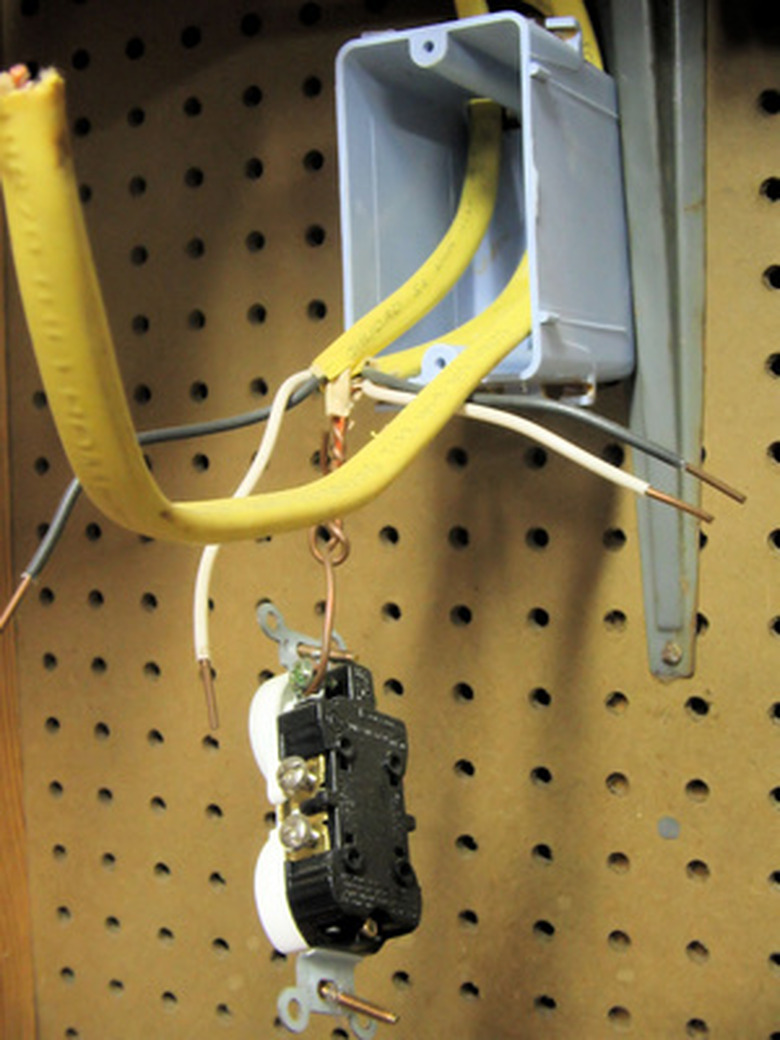How To Wire A 220V Single Phase
Things Needed
-
Insulated screwdriver
-
Four-strand electrical wire
-
Utility knife
-
Wire splicer
-
Two-gang circuit breaker
Most electric circuits in your house are 110 volts, which require a hot wire and a neutral, return wire. Some appliances and tools, however, require 220 volts, and you can provide this by running two separate 110V hot wires to the point-of-use. Each of these has to be connected to a separate breaker, and the breakers must be connected, or ganged, so that it one trips, the other will also trip. The usual colors for these wires is red and black.
Step 1
Open the door of the house panel and shut off the main breaker. Unscrew the panel cover and remove it. Note that shutting off the main power does not de-nergize the panel, so do not touch the brass buss bars or any exposed hot wires.
Step 2
Run four-strand electric wire through an available knock-out, and remove 6 to 10 inches of sheathing from it with a utility knife, being careful not to cut into the enclosed wires. Remove 1/2-inch of insulation from the insulated wires with a splicing tool.
Step 3
Unscrew the nut on an empty space on the silver buss bar, insert the white wire, and tighten the nut. Attach the ground wire to the ground buss bar in the same way. Insert the ends of the black and red wires into the separate breakers of a two-gang breaker and tighten the nuts. Do not snap the breaker into place yet.
Step 4
Connect the other end of the wire to its point-of-use, which could be a 220V receptacle or the connection point of an appliance. Remove 6 inches of sheathing and expose the ends of the wires with a wire splicer. Connect the white wire to the silver screw, the ground wire to the green ground nut, and the red and black wires to the brass screws. If you are wiring a receptacle, and the receptacle box is metal, connect the ground wire also to the box.
Step 5
Connect the receptacle to the box and install the cover or, if you are wiring an appliance, screw on the cover to the appliance.
Step 6
Go back to the panel and snap the two-gang circuit breaker into an available space, being sure that it locks firmly onto the hot buss. The turn the power back on and test the circuit.
Tip
The National Electric Code (NEC) requires that 220V circuits be wired with a neutral and a ground connection. The method of leaving the neutral wire unconnected, used in older houses, is obsolete.
Use 12-gauge wire for 20 amp and 10-gauge wire for 30 amp breakers.
Warning
The hot buss in the panel is energized even when the main breaker is off. Never touch it directly.
